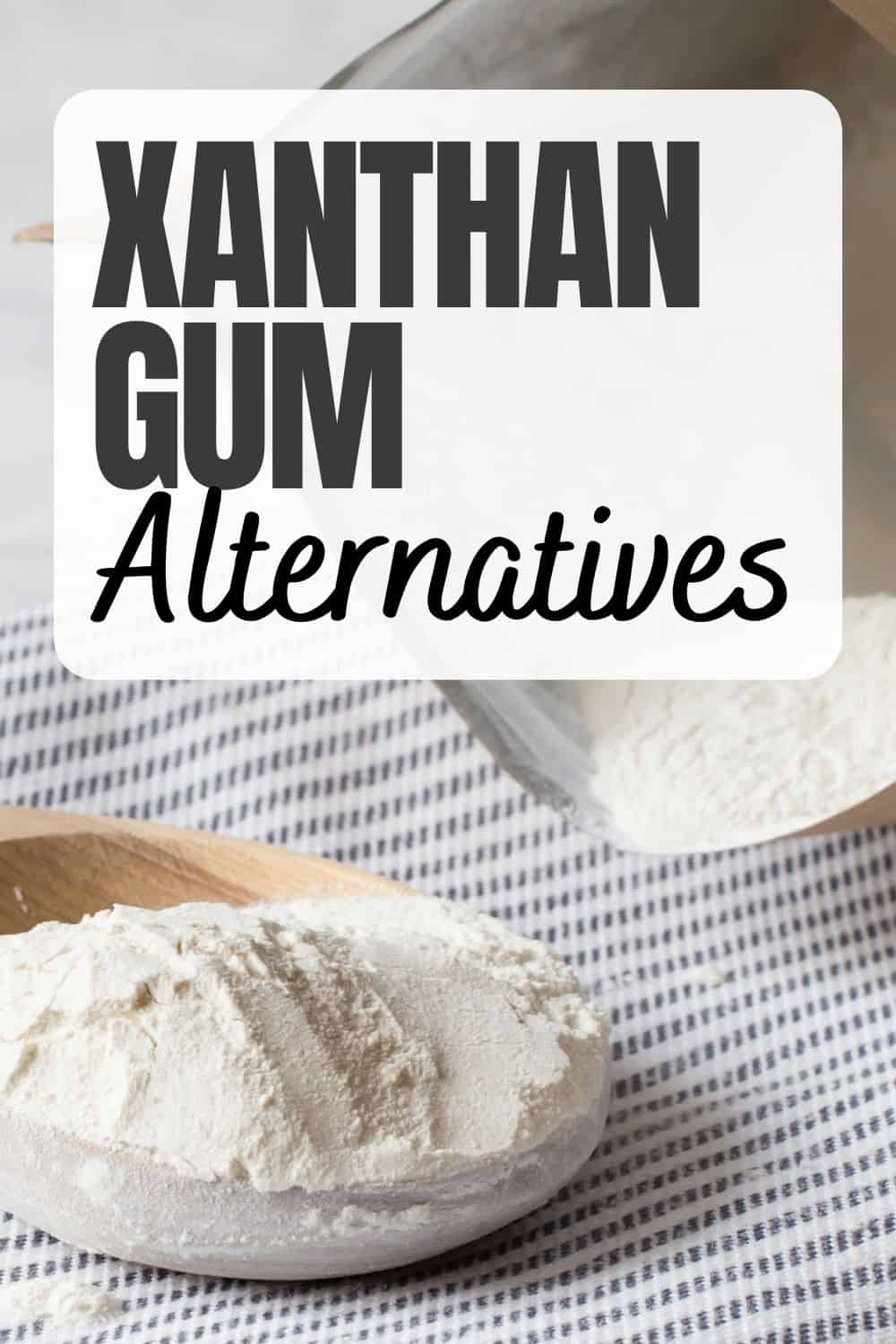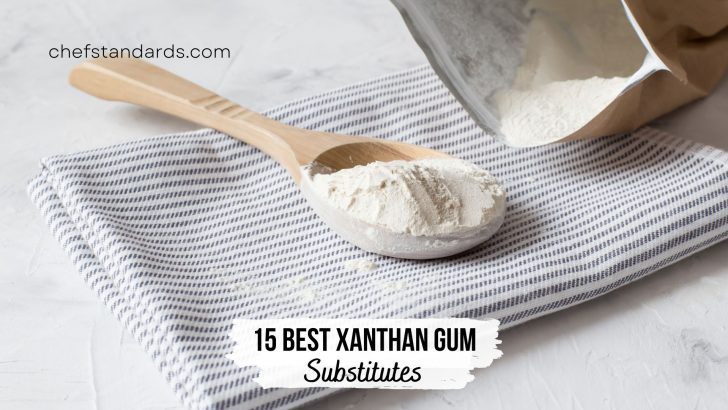This is not the ordinary gum that we all tend to chew from time to time so that our mouths can move around, keeping our teeth clean.
This type of gum is different since it is not so suitable for chewing, but rather as a thickening agent, binder, and emulsifier of various dishes.
It is actually a type of carbohydrate fermented by the bacterium Xanthomonas campestris and it is mostly used as a thickener in baked goods, but it can also be found in various inedible industrial products and cosmetics.
I will assume that your intention is to use it as an ingredient in cooking, which will be the determining factor in this article.
And this article is written to help you find your best xanthan gum substitute, no matter what you will be using it for.
And, believe it or not, there are as many as 15 excellent alternatives for you.
The List Of 15 Best Xanthan Gum Substitutes
As promised in the introduction, below is a list of 15 best substitutes for xanthan gum that can be used in all of your baked dishes, salads, or any other types of food in the broad cooking world.
1. Corn Starch
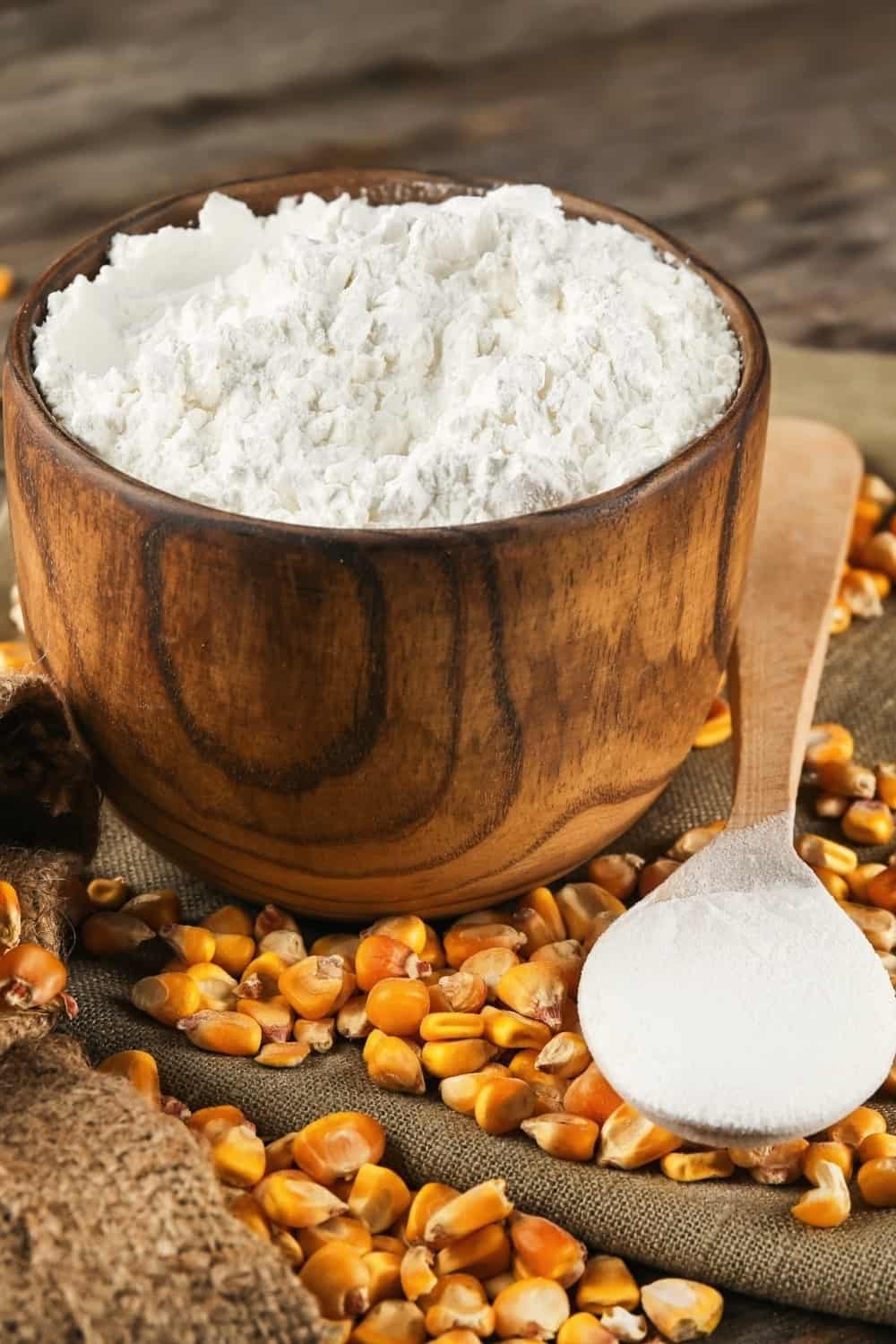
When you know that xanthan gum works best as a thickening agent in baked goods, it is not hard to conclude that corn starch can work as a great alternative very well.
Corn starch, also known as corn flour, is a type of flour made from the endosperm, a part of the corn kernel with a starchy texture.
Corn starch is used in so many foods and dishes nowadays, and it is especially present in various types of fast food.
As I already said, it works great as a thickener in various types of food, including soups, stews, and gravies and that is why so many people eat cornstarch.
Aside from that, it is gluten-free as well and can be found in most grocery stores and supermarkets at quite affordable prices.
If you decide to use it in your dish as a xanthan gum substitute, use it in a 1:1 ratio.
It will work for sure.
2. Egg Whites
Eggs are one of the most eaten foods in the world and that is no surprise since they are very versatile and can be used in so many types of dishes that it is hard to count them all.
One of the classic uses of eggs, and especially egg whites, is their role in baked goods.
Egg whites are known for their ability to bind other ingredients in the dish and, since that is one of the main roles of xanthan gum, it is no surprise that egg whites are one of the best alternatives.
Egg whites are ideal for those light baked goods like quick bread, batter bread, and cakes. This is because they produce a light and fluffy texture.
Eggs are also gluten-free and they can be found almost everywhere and at affordable prices.
Unfortunately, they are not suitable for those of you who follow a vegan diet because they are animal by-products.
For those of you who aren’t and want to use egg whites as an alternative, the general rule of thumb is to use 1 egg white for every tablespoon of xanthan gum.
3. Unflavored Gelatin
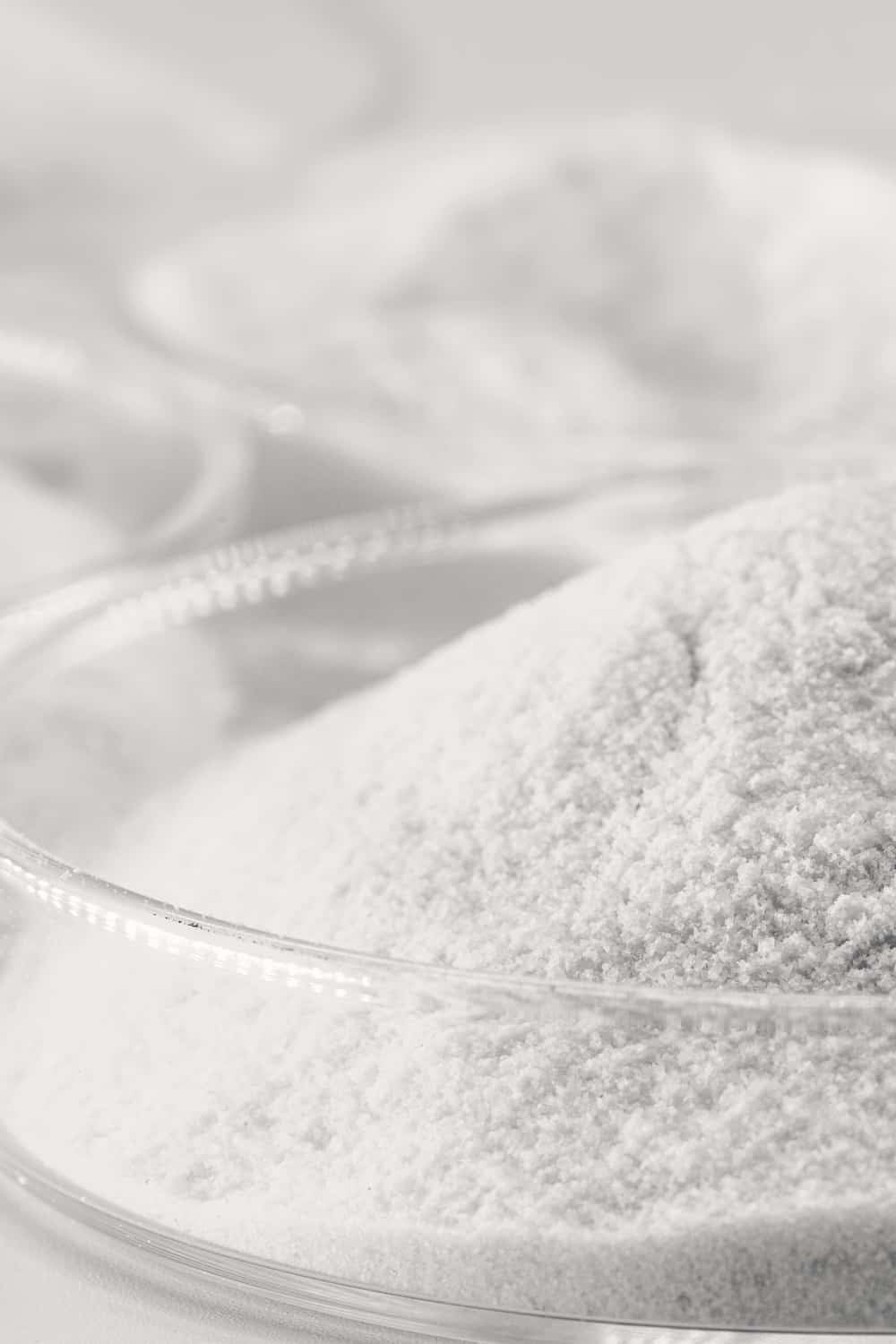
Most of you know what gelatin is and that it has that specific texture and consistency.
But, did you know that gelatin is an ingredient derived from the collagen taken from animal body parts?
Yes, so for those of you who follow a vegan or vegetarian diet or eat only halal food, this one is not an appropriate substitute and you should rather explore some other great alternatives.
However, for the rest of you, this option can be a great alternative for xanthan gum in some recipes.
Since it is responsible for thickening and stabilizing other ingredients, it is best to use it in puddings, jellies, and jams.
Aside from that, unflavored gelatin can also be used in baked dishes including bread and muffins.
If you eventually decide to use it in your dish, you will need 2 parts of gelatin for every 1 part of xanthan gum.
See Also: 10 Best Gelatin Substitutes For Gel-Like Texture And Thickening
4. Arrowroot Flour
If you are following a Paleo or gluten-free diet, then you certainly know what arrowroot flour is because it is a very popular ingredient among those people.
If you are not, I will just say that it is the starchy flour that comes from grinding and processing the root of the Florida arrowroot plant (Maranta arundinacea), which is native to the Caribbean and South America.
It has similar properties to corn starch since it is also quite starchy and gluten-free, and it can be used as a thickening agent in soups and sauces as well.
Aside from soups and sauces, it also works great in baked dishes. This primarily makes it a good alternative to xanthan gum. It also makes cookies and other baked goods crispier.
I also have to emphasize that arrowroot flour is very heat-stable, so it can be used in many hot dishes where it won’t lose its thickening powers. It is also neutral in flavor, so you don’t have to worry that it will change the flavor profile of your dish.
If you eventually decide to use it as a substitute for xanthan gum, use it in a 1:1 ratio.
5. Psyllium Husk
If you are into health and nutrition, you must have heard about psyllium husk. It is a dietary fiber that comes from the seeds of the plant known as Plantago ovata.
Since it is a dietary fiber, it is not difficult to conclude that it can provide you with certain health benefits. It is mainly good for your gut health, similar to xanthan gum, because both are soluble fiber that can promote regular bowel movement.
Aside from that, psyllium husk can be beneficial for your respiratory system and help to promote lower blood sugar.
But, to be honest, we are mainly interested in its role in the cooking world. And, just like xanthan gum, this amazing ingredient also works as a thickener in various types of dishes including soups, stews, and gravies.
It can also be a great binding agent in various baked dishes, especially as a gluten-free alternative.
So, if you eventually decide to use it as a xanthan substitute, use double the amount of it.
One more note. When being cooked, psyllium husk tends to absorb a lot of water very quickly and make your dish very thick, gel-like, and brown. So, you will also have to adjust the amount of water and the level of temperature.
See Also: 10 Psyllium Husk Substitutes That Are Just As Healthy
6. Chia Seeds And Water
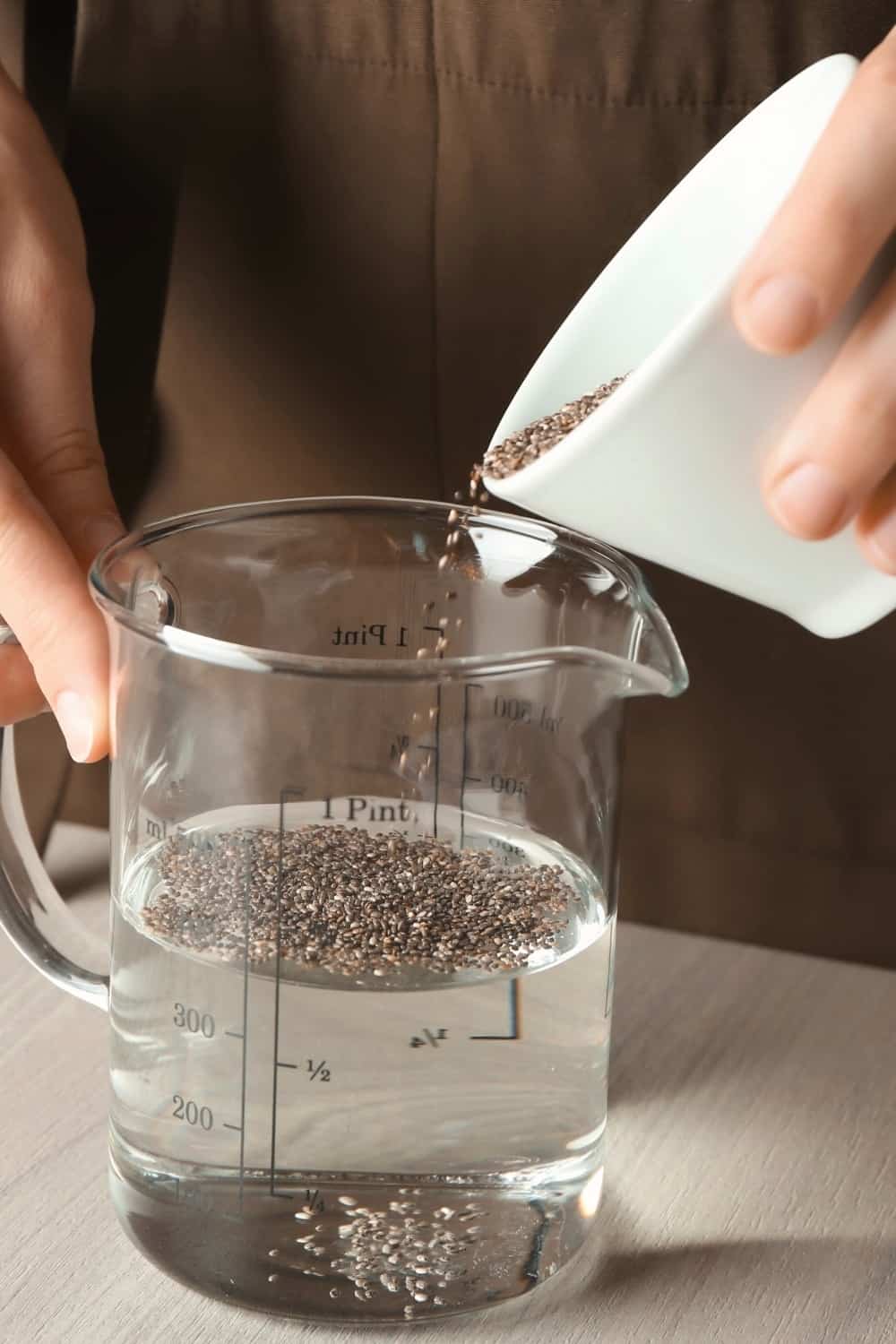
There are so many healthy and nutritious ingredients in this article, so it is almost impossible not to mention their incredible properties, although it is an article about using them as a substitute in cooking.
Chia seeds are no exception because these amazing seeds, which come from the plant Salvia hispanica, can offer so much in terms of health and nutrition.
They are full of fiber, protein, healthy fats, vitamins, and minerals and they have strong anti-inflammatory and antioxidant properties. It is proven that chia seeds are good for digestion, blood sugar control, and cholesterol level control.
Aside from all this, once combined with water the right way, chia seeds can serve as a great substitute for xanthan gum because they become gel-like and can work as a thickening and binding agent.
All you have to do is to use the same amount of chia seeds as xanthan gum and mix each tablespoon of chia seeds with 2 tablespoons of water.
You will have to stir the mixture properly and let it sit for about 15-20 minutes until a gel forms. After that time frame, you can use it in your recipe the same way as you would use xanthan gum. This combo is also a great egg substitute in bownies.
7. Ground Flax Seeds And Water
Another type of seed and another type of superfood as well. Yes, flax seeds are indeed a superfood considering that they are full of fiber, protein, healthy fats, vitamins, and minerals.
These incredible seeds are brown or golden-brown in color and they come from the flax plant, scientifically known as Linum usitatissimum.
Similarly to chia seeds, flax seeds also have to be mixed with water if you want to use them as a substitute for xanthan gum in your recipes. However, they have to be grounded first in order to work as a binding agent.
You can use them in a 1:1 ratio when substituting for xanthan gum and you will have to mix every tablespoon of ground flaxseeds with 2 tablespoons of water and let the mixture sit for about 15 minutes until it’s ready.
Take note that flaxseeds have a nutty flavor that can have an influence on the taste of your dish as well.
8. Agar Agar
Maybe it is less known to the broader audience, but Agar Agar is a very well-known ingredient among those folks who follow a vegan diet.
The main reason for this is the fact that Agar Agar works similarly to gelatin but is a vegan version since it is derived from various types of red algae.
Aside from using it as a vegan alternative to gelatin, you can also use it as a substitute for xanthan gum since it also works as a thickening and stabilizing agent of other ingredients.
However, you should also keep in mind that it will produce a stiffer and denser texture for your dish.
If you are okay with that, you can use it as a substitute in a 1:1 ratio. But before doing that, you must go through a bit of a longer preparation process.
Your first task is to mix Agar Agar with water by adding 4 tablespoons of water for every tablespoon of Agar Agar and stirring the mixture over low heat until dissolved. This will take about 3-5 minutes.
After that, you can remove it from the heat and let it cool for a few minutes before using it in your recipe.
9. Rice Flour

Although it is mainly used in Asian cuisine, flour made from ground rice is becoming more and more popular in Western cuisine.
There are actually three main types of rice flour and those include white rice flour, brown rice flour, and sweet rice flour.
All three types are great sources of carbohydrates, protein, and fiber and can be used in various types of baked dishes as a gluten-free alternative to wheat flour.
Aside from wheat flour, rice flour can be a decent substitute for xanthan gum because of its thickening and binding properties.
The best type for this is sweet rice flour because it has the highest amount of starch, which makes it the best thickening and binding agent of all types.
If you eventually decide to use it in your recipe, it is best to start with 1-2 tablespoons of sweet rice flour for every teaspoon of xanthan gum and adjust the amount according to your preference.
Take note that the flavor and texture will be different when you use this ingredient, so it is best to give it a try on a smaller batch before you make a large dish.
10. Glucomannan
And here is another culinary gift from Asian cuisine that can help you substitute xanthan gum in your recipe.
Also known as Konjac powder or Konjac flour, glucomannan is actually a dietary fiber made from the root of the Konjac plant that is native to Southeast Asia.
It has many potential health benefits and it has been used in Japanese and Chinese medicine for centuries.
Aside from health benefits, it can also serve as a good thickening and binding agent in various types of dishes due to its ability to absorb a high amount of water and produce a gelatin-like texture.
In general, you can follow a 1:1 ratio when using it as a substitute for xanthan gum.
However, if you are making food with chewier textures, like tortillas for example, you will have to use 1.5 times the amount of xanthan gum.
11. Guar Gum
It is a gum just like xanthan gum and it also comes in the form of white powder. Guar gum, also known as guaran, is a type of food additive that is derived from guar beans.
This ingredient is widely recognized as one of the most popular gluten-free flours for many types of baked dishes. It is also full of dietary fiber and, consequently, good for improving cholesterol and blood sugar levels.
Guar gum possesses excellent thickening, binding, and stabilizing properties and it is used in various types of dishes to improve and stabilize texture.
Because of these characteristics, it can be an excellent alternative to xanthan gum and it is best to use 3 parts of guar gum for every 2 parts of xanthan gum.
You can also mix it with some oils before adding it to other ingredients. But this is up to you to decide.
12. Pectin
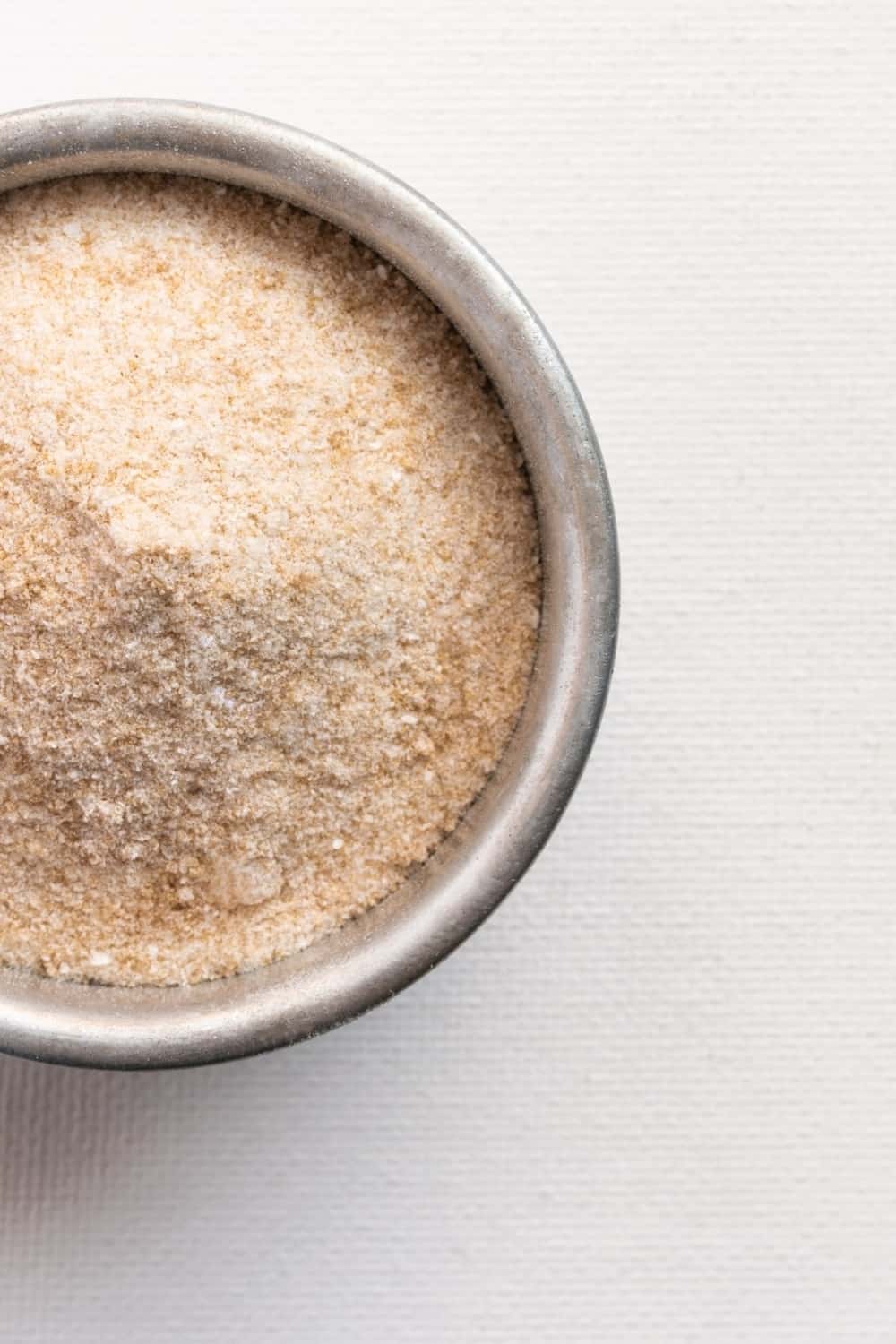
This is another interesting alternative that is most commonly known among vegans and vegetarians because it is a carbohydrate that is derived from the cell walls of certain fruits and veggies.
Just like Agar Agar, it is mostly used as an alternative to gelatin because of its ability to mimic the gelatin texture of the dish, especially in jams, jellies, and fruit spreads.
Aside from that, it is also a good thickening agent that is mostly used in soups and puddings.
Unfortunately, it is not as versatile as xanthan gum. But, if you find yourself making one of the dishes mentioned above, pectin can be a great alternative.
Although it can be found in both powder and liquid form, it is best to choose powdered pectin because it can be added to the dish directly.
13. Ground Almonds
Just like some other types of flour on this list, ground almonds, also known as almond flour, are most commonly used as a gluten-free substitute for all-purpose flour in various recipes for baked dishes.
Since it also has thickening and binding properties, this ingredient can serve as a decent xanthan gum substitute as well.
I am saying decent because it is not an ideal substitute and you should keep that in mind.
Namely, it will produce a slightly grainy texture and give your dish a nutty taste. If you are okay with that, you can freely use this alternative by adding 1 tablespoon for every cup of flour in the recipe.
14. Potato Starch
Although it is not a perfect substitute, potato starch can be a decent replacement for xanthan gum in some recipes.
This white powder is extracted from potatoes and, since it is gluten-free, it is mainly used as a substitute for wheat flour in baked dishes.
It is a decent alternative to xanthan gum because it has binding and thickening properties, as well as a neutral flavor that won’t disrupt the final flavor profile of the dish.
If you decide to use it instead of xanthan gum, it is best to use ½-1 teaspoon of potato starch for every teaspoon of xanthan gum.
One more note. Do not expect the same structure and texture of your baked dish made with potato starch because it can’t provide the desired level as xanthan gum.
15. Carrageenan
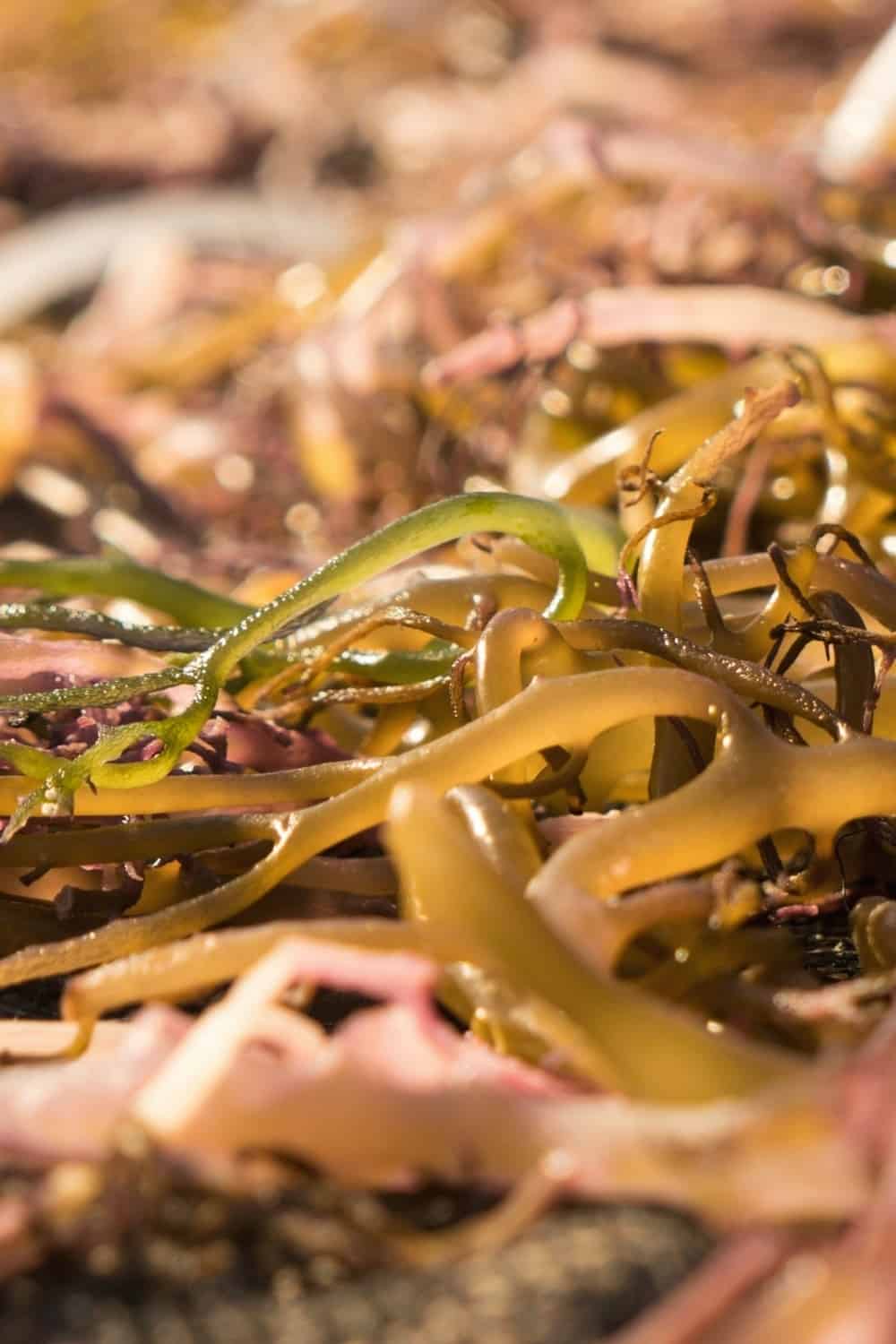
Carrageenan is a similar ingredient to Agar Agar because it is extracted from red seaweed and has powerful gelling properties.
It is mostly used as a thickening, stabilizing, and emulsifying agent in dairy products, but it can also be used in some other dishes including sauces, meats, and other processed foods.
It is not a perfect alternative for xanthan gum in all recipes, but it can serve as a decent replacement in dairy-based products, dressings, and sauces.
When adding it to your dish instead of xanthan gum, it is best to add a smaller amount because carrageenan has stronger gelling properties.
However, this can vary greatly based on the type of dish and desired properties of the dish itself.
